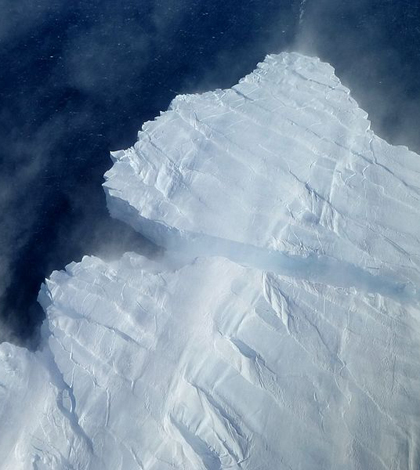Strips of sediment help lessen Antarctic glacial flow

A nascent iceberg breaks off Pine Island Glacier's calving front. (Credit: NASA)
Princeton University researchers say that strips of dirt and rock beneath Antarctic glaciers slow the flow of ice toward the sea, according to a release. The strips of sediment create friction zones that cause the flow to lessen.
The strips were discovered using data from the National Snow and Ice Data Center and the British Antarctic Survey. Those data were used to create mathematical models that estimated what happens inside glaciers as they flow along bedrock.
Knowing how the strips form will help future scientists understand how glacial flow responds to a warming climate. The researchers say the strips may play a role in buffering the effects of climate change because they help slow ice movement that contributes to rising sea levels.
Image: A nascent iceberg breaks off Pine Island Glacier’s calving front. (Credit: NASA)





0 comments